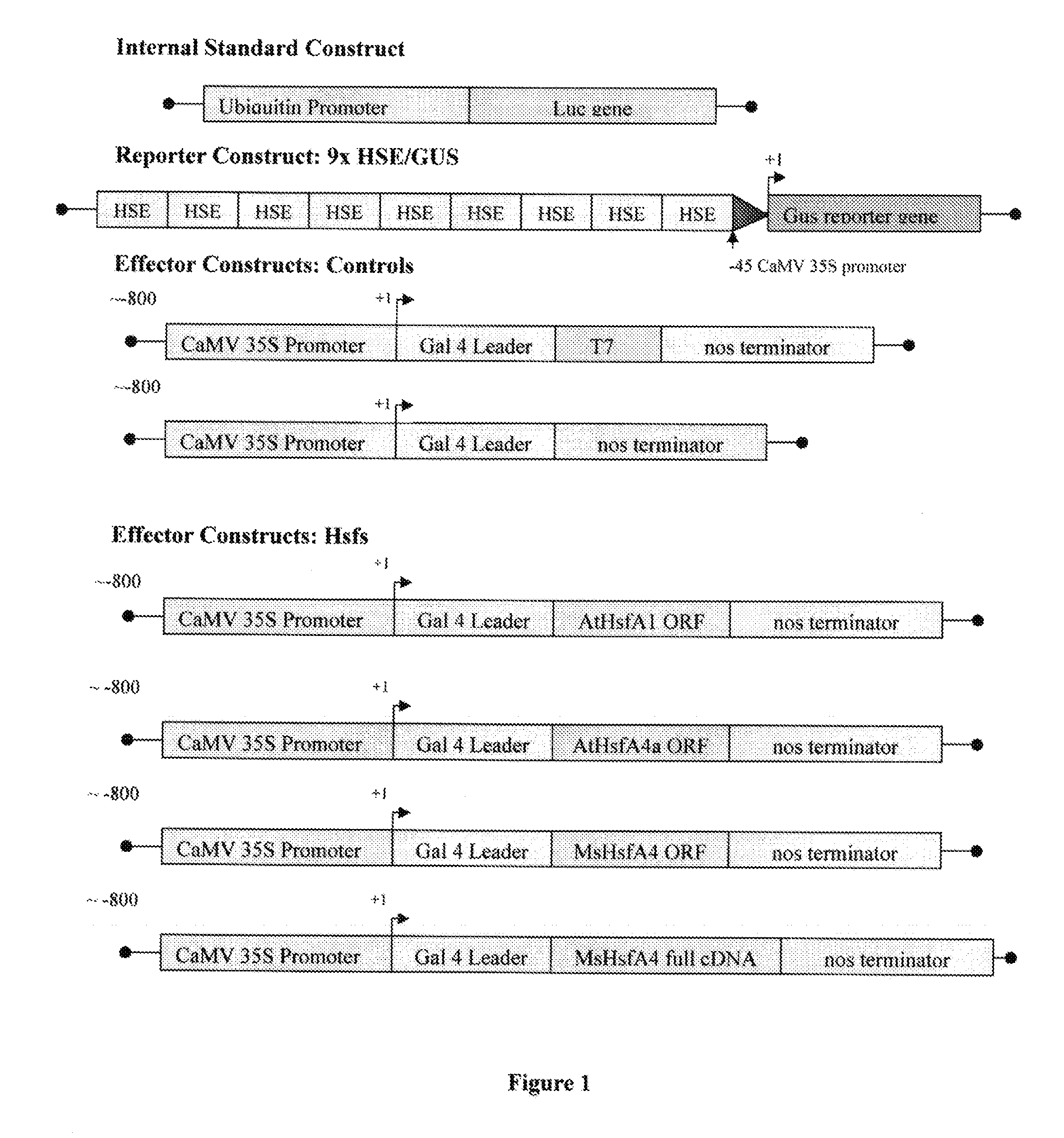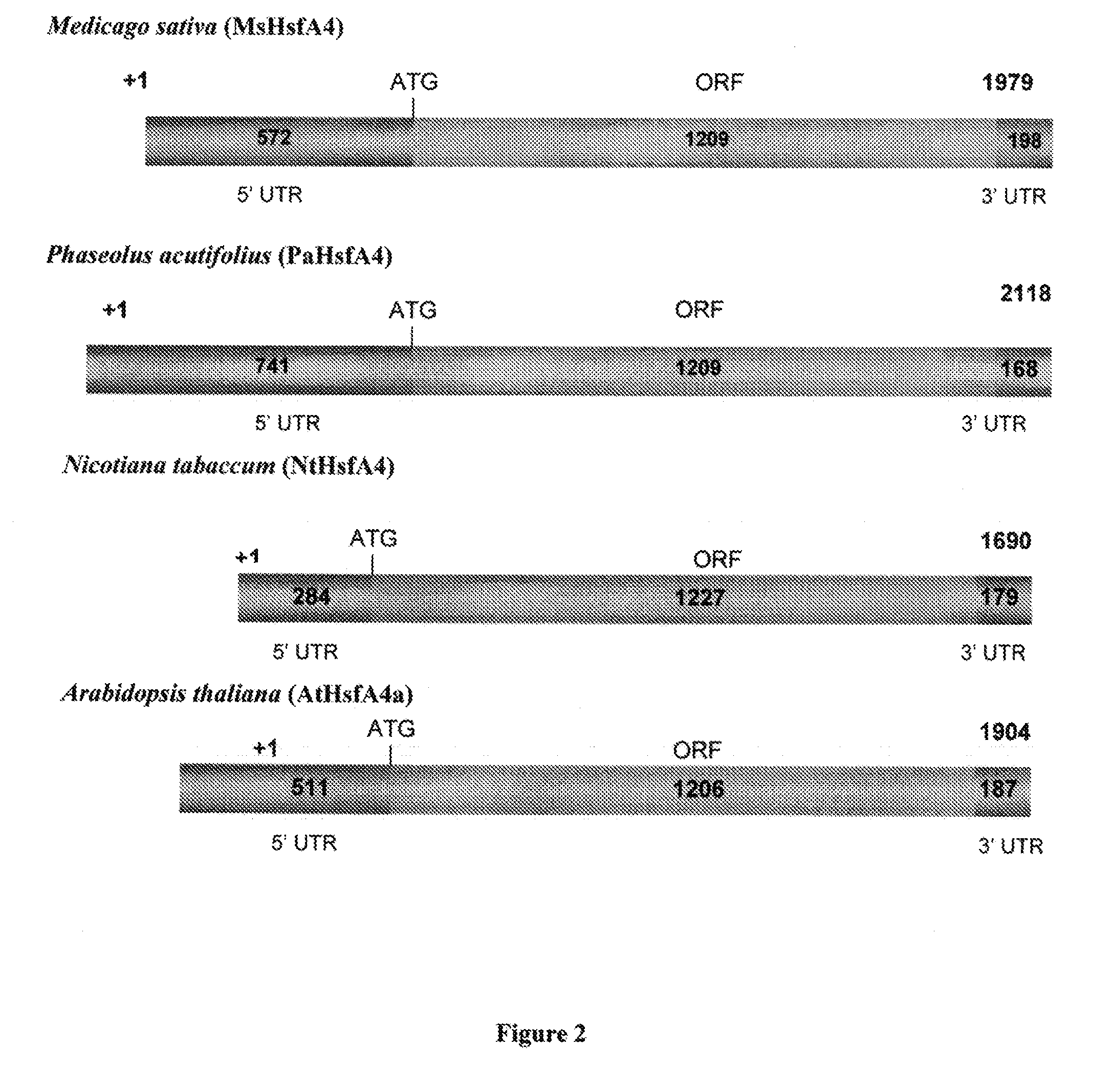Method of enhancing gene expression in plants
a technology of gene expression and plant, applied in the field of methods, can solve the problems of inability to repair, weaken alfalfa, and weaken alfalfa, and achieve the effect of enhancing the transcription of downstream genes
- Summary
- Abstract
- Description
- Claims
- Application Information
AI Technical Summary
Benefits of technology
Problems solved by technology
Method used
Image
Examples
example 1
Materials and Methods
Vector Construction
[0038]Expression constructs used in transfection experiments were kindly provided by Prof. Eva Czarnecka-Verner (University of Florida) and Dr. Jeremy Friedberg (Table 1 and FIG. 1). The constructs created were based on pBI121 (Clontech, Palo Alto, Calif.). Four effector vectors were used in the transient assay each containing differing coding regions of Hsfs; ORF of AtHsfA1 (also acting as a positive control), ORF of AtHsfA4, ORF of MsHsfA4 and complete cDNA of MsHsfA4 with 5′-UTR. Two control vectors; T7 epitope tag (amino acid sequence MASMTGGQQMG (SEQ ID No: 5) derived from pET17b) and Gal4 leader (derived from Saccharomyces cerevisiae) were used. Downstream from the promoter, the vector backbone contained a T7 tag or Gal 4 leader, Hsf coding region, and a poly-A-nos terminator sequence. Each construct was designed to activate β-Glucuronidase (GUS) reporter gene and was driven by a minimal 35S promoter (TATA box) fused to nine perfect (ful...
PUM
| Property | Measurement | Unit |
|---|---|---|
| temperature | aaaaa | aaaaa |
| temperature | aaaaa | aaaaa |
| temperature | aaaaa | aaaaa |
Abstract
Description
Claims
Application Information
 Login to View More
Login to View More - R&D
- Intellectual Property
- Life Sciences
- Materials
- Tech Scout
- Unparalleled Data Quality
- Higher Quality Content
- 60% Fewer Hallucinations
Browse by: Latest US Patents, China's latest patents, Technical Efficacy Thesaurus, Application Domain, Technology Topic, Popular Technical Reports.
© 2025 PatSnap. All rights reserved.Legal|Privacy policy|Modern Slavery Act Transparency Statement|Sitemap|About US| Contact US: help@patsnap.com



